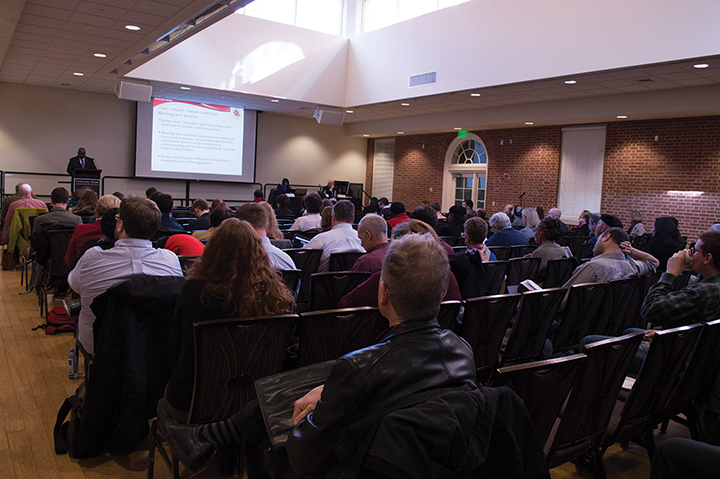After University of Maryland officials said a campuswide ban of hate symbols would limit First Amendment rights, a University Senate committee discussed on Friday how to address the issue.
Instead of a proposed hate symbols ban, the Campus Affairs Committee reviewed this university’s non-discrimination policy, and many members believed it covers hate symbols and actions taken against them.
The policy labels hate and intimidation symbols as discrimination and harassment — which it defines as “conduct, whether verbal, physical, written, graphic, or electronic that threatens, intimidates, offends, belittles, denigrates, or shows an aversion toward an individual or group.”
The committee plans to further review the policy to determine its effectiveness by examining how it has been followed after incidents of hate symbols placed on the campus. After gathering more information, it will discuss whether other policies or protocols should be suggested. The committee was charged by the Senate Executive Committee to review policies and discuss how to make a change, and has until March 30 to recommend a solution to bring to a vote.
[Read more: UMD official whose words sparked #UMDNotAHome responds at task force meeting]
University Police Chief David Mitchell and Diane Krejsa, this university’s deputy general counsel and the counsel’s chief of staff, told the committee that the proposed ban’s threat to free speech meant such a policy would not be possible. Vandalizing a building by drawing a swastika violates the code of student conduct, but hate symbols don’t and are expressions of people’s views.
The committee agreed that they need to review and gather information on how the policy is implemented and how it handles incidents of hate symbols to decide whether it effectively combats the issue. It also plans to gather information about how this university communicated after recent incidents and policies implemented at peer universities.
“Those things are going to happen whether this policy changes or not,” said Beth Javier-Wong, the university relations director. “It’s on paper, but what good does that do if communication is really where the issue is.”
This semester, a swastika was found in the plant sciences building on Sept. 13, and three incidents of offensive language and drawings — including a swastika — were reported in the men’s bathroom of the North Campus Dining Hall between Sept. 28 and Oct. 9.
“It just seems to me that too often on this campus when something bad happens, the first thing that it’s lead with is, ‘Well, there’s free speech,'” said Luke Jensen, the LGBT Equity Center director . “[The approach] should be something different.”
Some committee members, including Miriam Sharp, research safety specialist in the environmental safety, sustainability and risk department, said it could help to focus on reviewing how this university and administration communicates with the campus community after incidents of hate bias, hate crime or intimidation.
[Read more: UMD officials say a campuswide ban of hate symbols would limit First Amendment rights]
“If someone hangs a noose where an African-American is working, we work with that individual and deal with that particular situation … without necessarily taking into consideration [that] others on campus, who learned of that incident, are going to feel threatened and are upset by that,” Jensen said. “What are we doing as a campus to reassure our population that is still a welcoming place?”
At the committee’snext meeting on Nov. 28, the committee will discuss results from their research and. The Senate Executive Committee also recommended they consult with groups such as the President and Senate’s Joint Task Force on Inclusion and Respect Task Force and this university’s Title IX and chief diversity officers.



